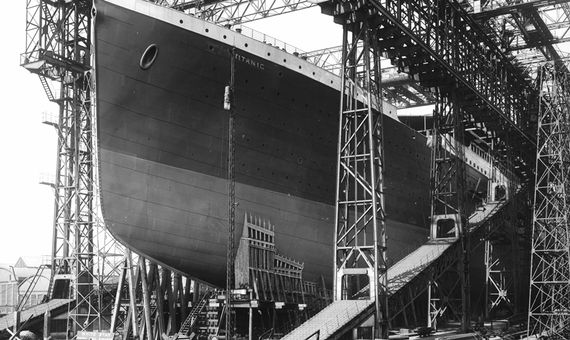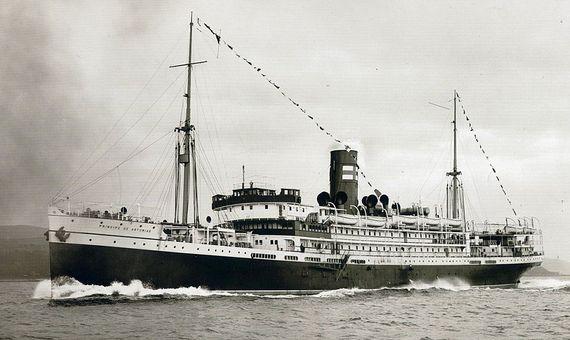If there are two elements that have always fascinated humans, they are the sky and the seas. From simple vessels made of reeds to today’s sophisticated transatlantic ships, maritime history has been evolving for thousands of years, a history in which shipwrecks have also played a key role, opening the way for advances in construction, in navigation techniques and in the safety of ships.
The adoption of technological advances such as steel ships, radar, GPS and double hulls has helped to prevent the recurrence of catastrophes like those that occurred last century. Although the Titanic is the best-known maritime disaster, other voyages also resulted in hundreds of deaths due to a series of misfortunes that might have been avoided today.
The fire on board General Slocum
Before the 9/11 attacks, the tragedy that caused the most deaths in the city of New York (USA) was the fire of the steamboat General Slocum. On June 15, 1904, St. Mark’s Lutheran church on the Lower East Side hired the vessel to sail to Long Island, where they planned to hold their annual picnic.
But they would never reach their destination. Shortly after setting off, a fire started in the Lamp Room. Lamp oil and a load of hay fuelled the flames, which spread rapidly due to the ship’s wooden construction and a locker filled with flammable paint. Of the 1,388 people who were travelling on board, 1,021 drowned in the river or from the flames.

The tragedy revealed the numerous shortcomings of the vessel: the lifeboats, life jackets and fire hoses were all useless, being rotten or defective. What’s more, Captain William Van Shaick did not take the ship to the shore as soon as he was notified of the fire. Instead, he decided to continue his course and the headwinds fanned the fire. The ship went up in flames and sank near North Brother Island.
The captain was found guilty of criminal negligence for never having carried out fire drills and for failing to maintain the fire extinguishers in good condition. He was sentenced to ten years in prison, of which he served more than three.
The tragedy of the Titanic
The Titanic wanted to go down in history for being the biggest ship in the world, but it did so for something far more tragic: it hit an iceberg on its maiden voyage when it was travelling between Southampton (United Kingdom) and New York.

The story of the Titanic now forms part of popular culture. On the night of April 14, 1912, the lookout Frederick Fleet spots an iceberg and sounds the alarm. In response, First Officer William Murdoch orders a hard turn to port and for the engine room to reverse the engines, but the starboard hull of the ocean liner scrapes laterally against the submerged part of the enormous block of ice, buckling the hull plates and popping rivets. Several lower compartments begin to flood and the ship sinks within about two and a half hours, leaving 1,514 dead out of the 2,223 people who were on board.
The accident served as the catalyst in 1914 for the adoption of the first international convention for the safety of life at sea. Among the measures adopted to prevent the recurrence of new catastrophes was that a route was established farther south that avoided icebergs and there were patrols that warned of the presence of icebergs.
After the disaster, ship owners also began to build ships with double hulls as a protective element. According to Chris O’Regan in the HuffPost, the Titanic could have been provided with a double hull but the builders saw it as an unnecessary expense.
The sinking of the RMS Lusitania
The 1910s was a black period for naval history. Only three years after the sinking of the Titanic, another British colossus, the Lusitania, was torpedoed by the German submarine U-20 on May 7, 1915 in the midst of the First World War.
The ocean liner was traveling from New York to Liverpool (United Kingdom) and was sunk off the coast of Ireland by the U-boat in a military action that, according to many, accelerated the entry of the United States into the conflict. Of the 1,198 people who lost their lives, 128 were Americans.

The British government financed part of the construction of the transatlantic passenger liner on the condition that it would perform the functions of an armed merchant cruiser if need be, which is why it contained a secret compartment for weapons and ammunition. It was that characterisation as an auxiliary military ship that was the argument that the German troops used to justify their attack.
In fact, as reported by the New York Times and other subsequent investigations, although there were two explosions, the submarine only launched one torpedo, so the second detonation could have been due to the ammunition that the ship was reportedly carrying in its holds.
The reefs and the Príncipe de Asturias
Icebergs are not the only natural threats to ships. Storms and coral reefs can turn into a fatal combination. Although modern ships are equipped with radars, GPS and other instruments to navigate under conditions of almost zero visibility, a century ago the technology was based on nautical charts for orientation and the telegraph.
The Spanish ship Príncipe de Asturias sank near the coast of Brazil on March 5, 1916, while on the Barcelona-Buenos Aires route. Rain, fog, wind and choppy seas pushed the vessel towards the reefs of Punta Pirabura, against which it unavoidably collided. There were 457 deaths out of the 600 that were travelling on board.

Like the Titanic, although the Príncipe de Asturias had watertight compartments and a double bottom —tanks between the outer shell of the hull and the cargo tank—, it was not built with a double hull, a barrier along the length that protects the boat from collisions.
The ‘Titanic’ of the Swedish Navy
Long before all these shipwrecks, in the seventeenth century, King Gustav II Adolf of Sweden, determined to dominate the Baltic Sea, gave orders to build the Vasa. Designed to be the most formidable and powerful ship in the world, it sank on its maiden voyage (like the Titanic) on August 10, 1628. A little more than half a nautical mile from its mooring point and only 15 minutes after lifting anchors, the Vasa disappeared under the waves before the incredulous gaze of the inhabitants of Stockholm, who had crowded the port of the Swedish capital to watch the ship set sail.

Designed to transport 145 sailors and 300 soldiers, the Vasa reached 63 metres in length and could displace more than 1,200 tons thanks to 10 large sails. Initially, it was only going to carry one row of guns, but the king ordered the addition of second row (against the opinion of the engineers), to house 64 bronze cannons. It would take almost two centuries for another ship, the USS Constitution, to reach the same firepower.
That and other capricious modifications during its construction, transformed what could have been an excellent ship into a very unstable craft. On the day of its launch, a gust of wind caused the ship to heel and seawater entered through the holes of the improvised row of canyons: in a matter of minutes, the Vasa sank in waters more than 30 metres deep. At least 30 of its 200 crewmembers died. After more than 300 years on the seabed, it was refloated in 1961 after a long and complicated operation. It is now housed in the famous Vasa Museum in Stockholm, and it is the only ship from the seventeenth century that has arrived virtually intact to this day.
Laura Chaparro
Comments on this publication